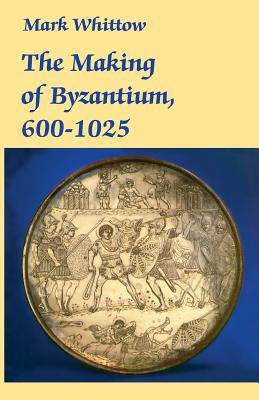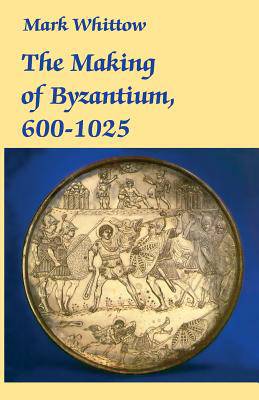
- Afhalen na 1 uur in een winkel met voorraad
- Gratis thuislevering in België vanaf € 30
- Ruim aanbod met 7 miljoen producten
- Afhalen na 1 uur in een winkel met voorraad
- Gratis thuislevering in België vanaf € 30
- Ruim aanbod met 7 miljoen producten
Zoeken
Omschrijving
Mark Whittow presents a clear, up-to-date reassessment of the Byzantine empire during a crucial phase in the history of the Near East. Against a geopolitical background (superbly illustrated with fourteen maps), his book covers the last decade of the Roman empire as a superpower, the catastrophic crisis of the seventh century, and the means whereby the embattled Byzantine empire hung on in Constantinople and Asia Minor until the Abbasid Caliphate's decline opened up new perspectives for Christian power in the Near East.
A special feature is Whittow's coverage of Byzantium's neighbors, allies, and enemies in Europe and Asia. He stresses the geographical context of events, often overlooked in other accounts of this period. The origins of Russia, relations with the nomad powers of the steppe world, the competition between Bulgars, Romans, and Slavs in the Balkans, and the frequently ignored region of the Transcaucasus are all given extended treatment. No such wide-ranging work has appeared in English for nearly 30 years, and Whittow's book will be invaluable for all scholars, students, and enthusiasts of medieval history.
A special feature is Whittow's coverage of Byzantium's neighbors, allies, and enemies in Europe and Asia. He stresses the geographical context of events, often overlooked in other accounts of this period. The origins of Russia, relations with the nomad powers of the steppe world, the competition between Bulgars, Romans, and Slavs in the Balkans, and the frequently ignored region of the Transcaucasus are all given extended treatment. No such wide-ranging work has appeared in English for nearly 30 years, and Whittow's book will be invaluable for all scholars, students, and enthusiasts of medieval history.
Specificaties
Betrokkenen
- Auteur(s):
- Uitgeverij:
Inhoud
- Aantal bladzijden:
- 480
- Taal:
- Engels
Eigenschappen
- Productcode (EAN):
- 9780520204973
- Verschijningsdatum:
- 5/08/1996
- Uitvoering:
- Paperback
- Formaat:
- Trade paperback (VS)
- Afmetingen:
- 140 mm x 218 mm
- Gewicht:
- 612 g

Alleen bij Standaard Boekhandel
+ 132 punten op je klantenkaart van Standaard Boekhandel
Beoordelingen
We publiceren alleen reviews die voldoen aan de voorwaarden voor reviews. Bekijk onze voorwaarden voor reviews.











